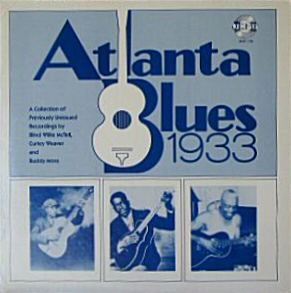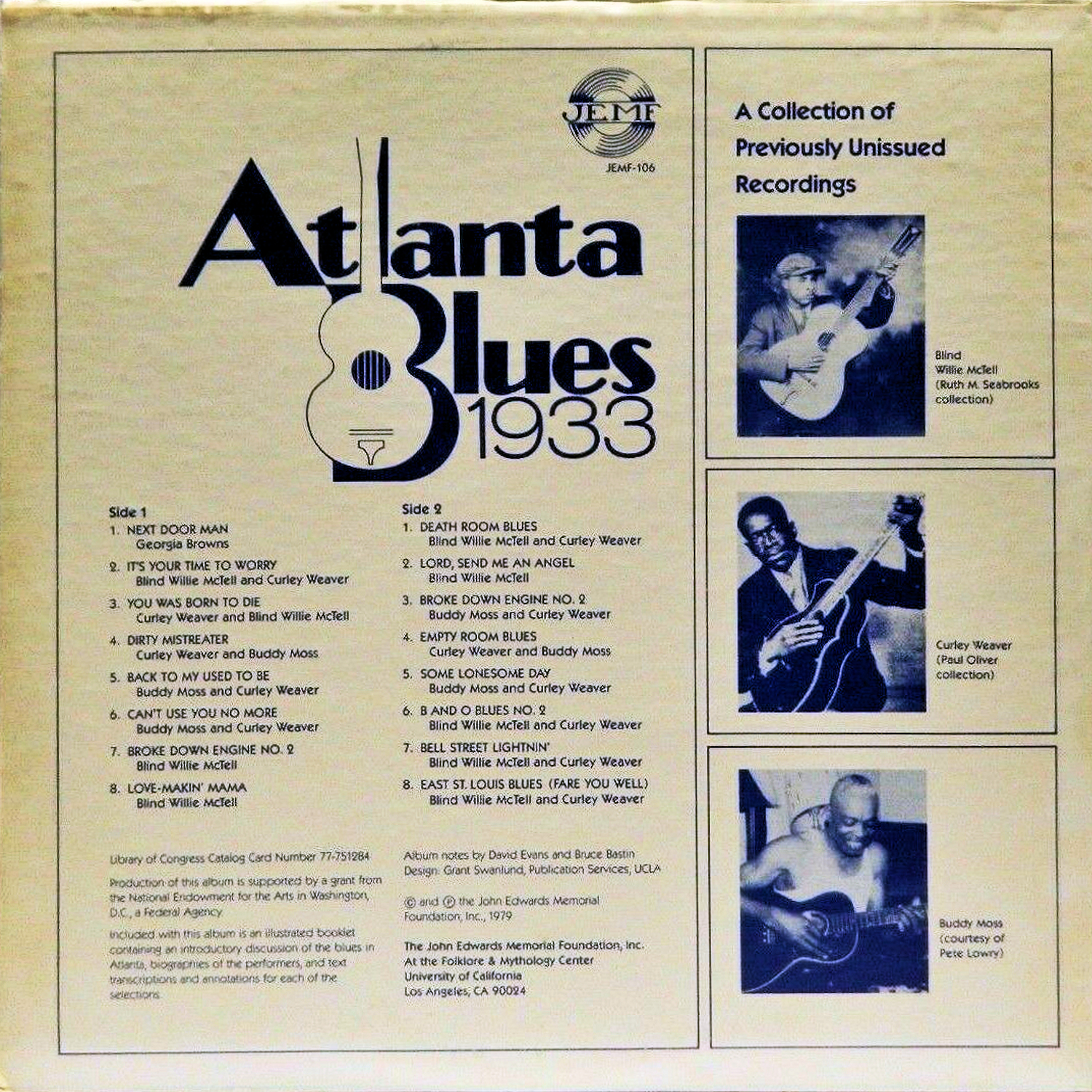Three days ago, John Edwards would have turned 80. He only made it to 28, yet without him we might never have heard the invaluable test pressings of the 1933 recordings by Blind Willie McTell, Curley Weaver and Buddy Moss (recorded the year after Edwards was born). Here's the story:
John Edwards grew up to be an Australian amateur botanist, map maker, hiker, banjo-player, guitarist and collector of early American folk and hillbilly music. Born July 22, 1932, he died in a car crash on Christmas Eve twenty-eight years later, but his will left his collections of records and his papers for the “furtherance of serious study, recognition, appreciation and preservation of genuine Country or Hillbilly music...” Did he intend that to cover the country blues? I hope so.
A major country-music record collector from Los Angeles, Gene Earle, with whom Edwards had long been in correspondence, was his executor, and he got together with several of the key academic folklorists with whom Edwards had also corresponded, to make all this happen. The John Edwards Memorial Foundation, the JEMF, duly incorporated in 1962 “to promote the study and dissemination of knowledge about American folk music of the 1920s-1940s”, was established within the Folklore and Mythology Center at UCLA.
At the end of June 1975 the National Endowment for the Arts in Washington DC awarded them a grant of $16,000 to help expand the JEMF’s program of reissuing old recordings, which they had already launched. In a nice touch, the grant letter from the NEA was from a woman called Nancy Hanks - which is the name of a famous, almost mythologised train from 19th Century Georgia. (This train was in turn named after a racehorse, and the horse named after Abraham Lincoln’s mother.) The Executive Secretary at the JEMF who received the letter, Norm Cohen, was himself working on a book about the railroad in American folksong at the time.
One of the albums the JEMF wanted to put out was indeed a collection of those unreleased test-pressings from the 1933 recordings made in New York by Curley Weaver, Buddy Moss and Blind Willie McTell.
These test pressings had been saved all through the intervening four decades by the recording sessions’ original producer, Art Satherley, the man who had first come to the States to look for cowboys and indians.
Known latterly as Uncle Art Satherley, he had now donated his unique surviving copies of twenty-three unreleased tracks from the 1933 sessions, among other items, to the JEMF, thanks to a veteran country songwriter and singer from Oklahoma, Johnny Bond, who had kept in touch with Uncle Art all along but was also in touch with Ken Griffis at the JEMF. Bond had been a 1930s radio star, co-written a couple of songs with Ernest Tubb and with Gene Autry, and appeared in the cowboy films Saga of Death Valley, Kansas City Kitty, Duel in the Sun, Gallant Bess, Cowboy Commandos, Six Lessons and TV Ranch Party. In Johnny Bond, Art Satherley had at last found a cowboy of sorts.
The folklorists David Evans and Bruce Bastin got involved in the project of turning some of these test pressings into an LP, eventually to be called Atlanta Blues 1933. (A mildly confusing title, given that the recordings had been made in New York City, and that most people are agreed that there was no such thing as an Atlanta blues style.)
The intention, as with others in the JEMF series, was to press just 1,000 copies of this album: a rather small number, granted the huge amount of work and travel that was to go into providing its sleevenotes, though this too conformed to their policy for the series. Norm Cohen had written in 1971: “We have in mind fairly limited productions…but with particular stress on careful and extensive annotation in the form of elaborate insert brochures.” Material was to be “chosen not only for entertainment value, but also on the basis of historical, sociological, folkloristic and musicological importance.”
The result, JEMF-106, was issued in LA in 1979, and certainly was important.
Thanks to Stefan Wirz's amazing website & database for these two photographs
Subscribe to:
Post Comments (Atom)




1 comment:
The blues! Still the best kind of music ever created. Relaxing and smoothing all in one!
Post a Comment